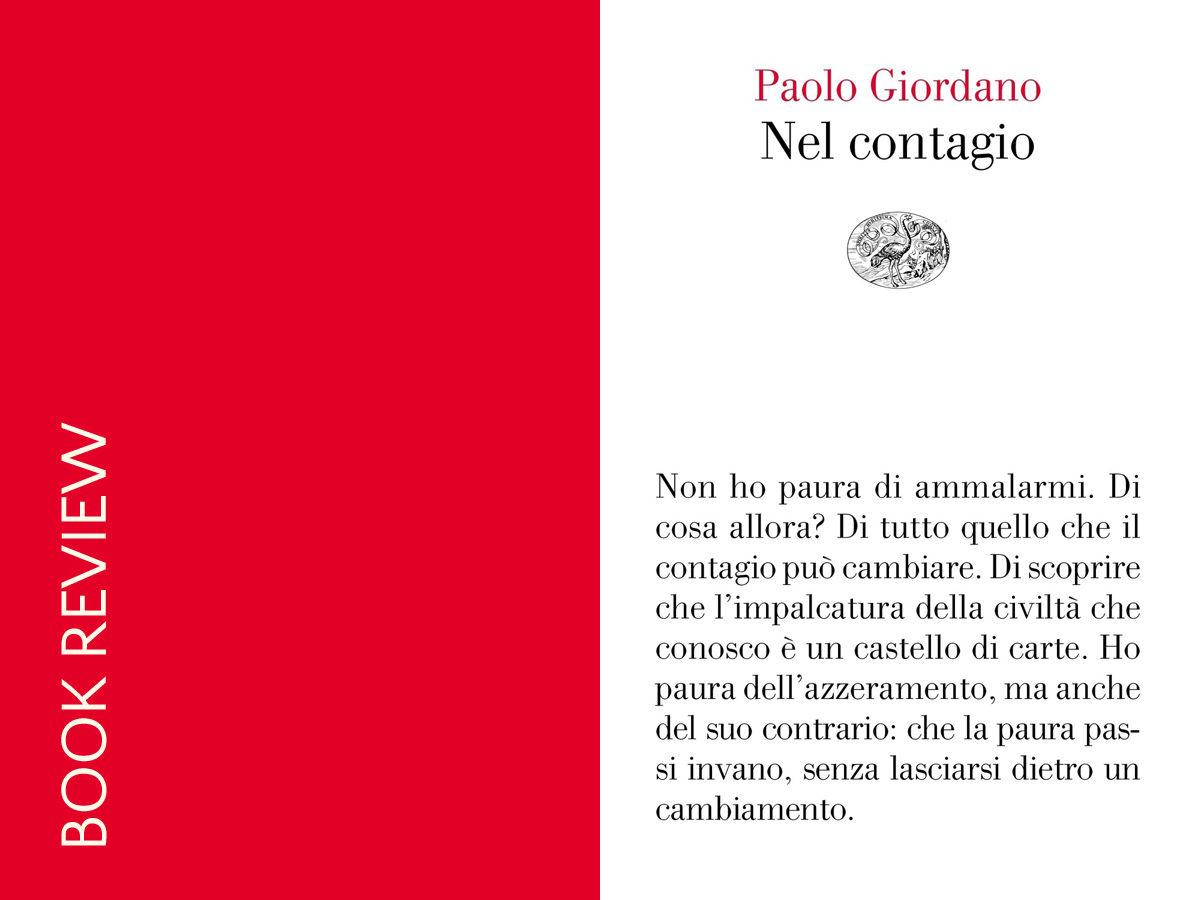“How Contagion Works” is the new essay by Paolo Giordano, published by Einaudi
Normality has been suspended. Now is the time of the anomaly, we must learn to live in it, find reasons to welcome it. It is not a casual accident or a curse. It has already happened and will happen again. It is not the first pandemic in the world, it is the fastest. How Contagion Works is the new essay by Paolo Giordano, writer and physicist, from Turin, winner of the Strega Prize and the Campiello Opera Prima Prize with his debut novel The Solitude of Prime Numbers. Published by Einaudi, the book is an instant book that invites you to reflect on the spread of the COVID-19 pandemic to find a key to an experience that is destabilising the world, to identify a meaning to be shared, which is personal and at the same time common to the collective. A reflection that must necessarily start from the complexity of the world we live in, from the intricate network of relationships and daily habits that suddenly has become reduced to a void that is difficult to fill. What the author defines as “the fear of having to reset everything, but also of its opposite: that the fear passes in vain, without leaving a change behind”.An invitation to reflect that it is above all an exhortation to adopt a different outlook on reality, more open and that spans the community because ‘in the contagion, the lack of solidarity is first and foremost a lack of imagination’.In the opinion of Paolo Giordano, a common perspective is needed: ‘the epidemic encourages us to think of ourselves as belonging to a community. It obliges us to make an effort to envisage that which in a normal circumstances we are not used to doing: seeing ourselves as inextricably connected to others and taking their presence into account in our individual choices.’ At the same time, it motivates us to act as a community, to be united to face together the threats of a future that has suddenly become uncertain and full of risks.‘No man is an island’, but John Donne’s meditation today – the author warns us – ‘takes on a new, sombre meaning with contagion’, because the virus spreads through our network of contacts. Our relational world is, at the same time, a source of strength and vulnerability.We can’t rely on the idea of a restricted community, since the virus has shown us that it knows no boundaries. We all belong to an broader community, which extends to all humanity. And it is this community that we must learn to take care of. It is also appropriate to reflect on the lexicon and the tones we adopt to describe the pandemic: war metaphors, harsh and dogmatic statements, a mood of hysteria. Contagion requires a new way of expressing itself, closer to that of science, a language that relies on the systematic use of doubt, on the choice of appropriate terms.It is necessary to remedy the custom of communicating to the general public only through trivial, simplistic, even primitive concepts. Striving to provide truthful answers however uncomfortable and if necessary with the intellectual honesty of saying ‘we don’t know yet’, ‘these hypotheses cannot yet be proven’, ‘we need more time’. The author’s hope is that in communication something really changes and that everyone learns to be more demanding, interrupting the vicious circle of distrust that today keeps experts and the general public at a distance. In the editorial panorama of the instant books that are accompanying the spread of the pandemic, How Contagion Works is a work that undoubtedly stands out for the originality of approach and intent. The author’s proposal to readers is that of a sort of reasoned diary, created to share, in almost real time, the reflections on an event that promises to mark the future and to deeply and deeply affect our community for a long time.An account of first-person thoughts and experiences, narrated in a refined and agile form, through a writing that winds along twenty-seven short chapters, almost to form a succession of as many still images. The choice of a linear and deliberately measured style that constitutes a note of merit of the work, where even the pages that describe the anxiety and uncertainty that a pandemic brings with it, maintain an air of calm and reflection, far from the distorted and alarmist tones that have often exasperated the media communication of the pandemic. In the midst of the storm, Paolo Giordano chooses to offer an accessible port for everyone, entrusting science and mathematics with the description of the most complex phenomena, such as the dynamics of contagion, the logic of social distancing, the interdependence of personal action in a increasingly interconnected and global world.Although the child of a pandemic emergency – and therefore necessarily short, timely and targeted – How Contagion Works has the requisites to carve out a longer lifetime in the cultural landscape than the many instant books that deal with contingency, placing itself among the works that lead to less restricted times of reflection, to broader lines of thought, capable of taking the experiences lived along new collective visions.On the other hand, as the author points out, the choice to write the essay stems from the need to apply experience and thoughts of an interruption, to “make better use of this time, use it to think what normality prevents us from thinking: how we got here, how we want to recover. Make the days count . Acquire a wise heart. Do not allow all this suffering to pass in vain.”It is the idea of a writing intended as a reflection in the course of work, the child of a daily rhythm that has been interrupted, of an ‘unexpected empty space’ to be used for writing, so as not to ‘lose what the epidemic is revealing to us about ourselves’.___Title: How Contagion WorksAuthor: Paolo GiordanoPublisher: EinaudiPublished: 2020




